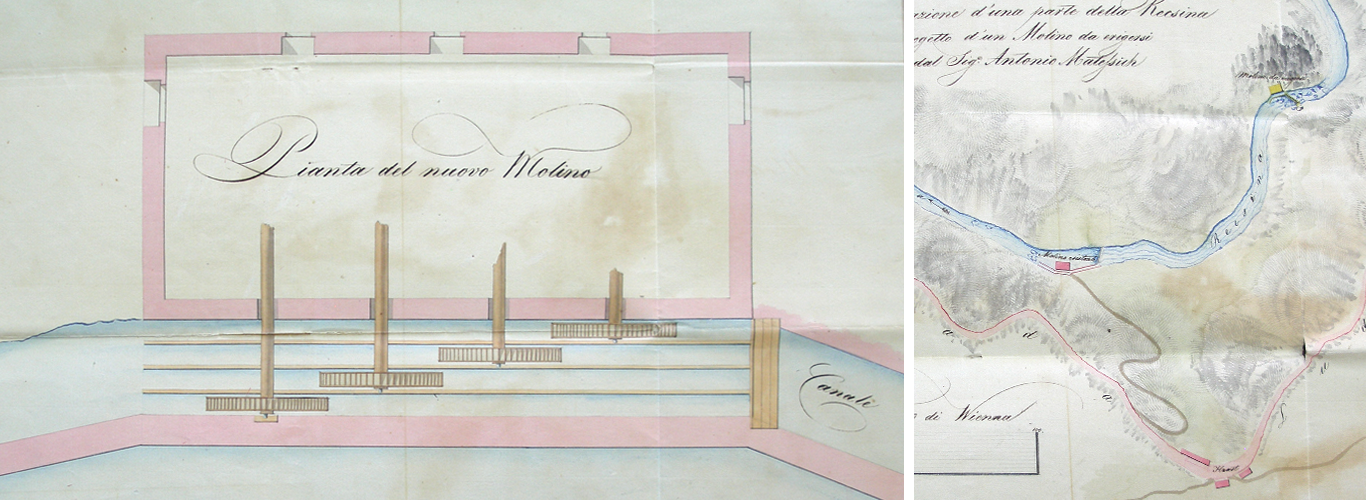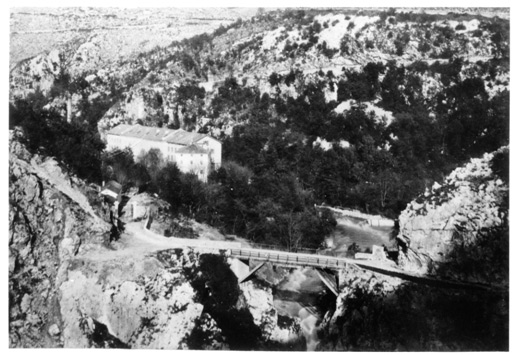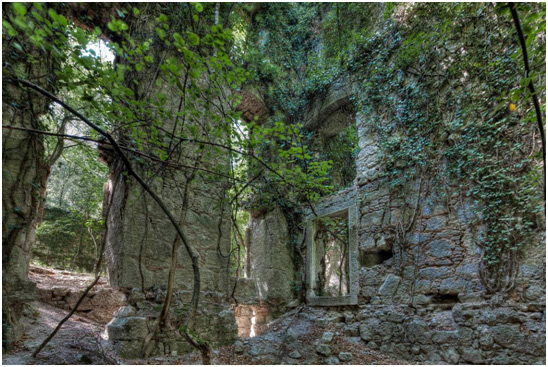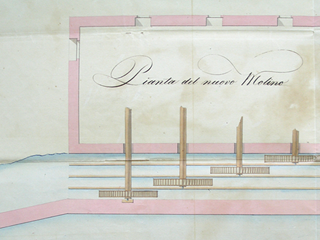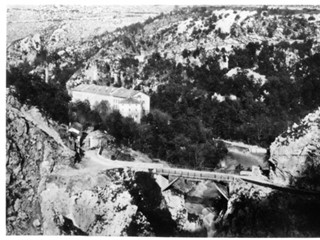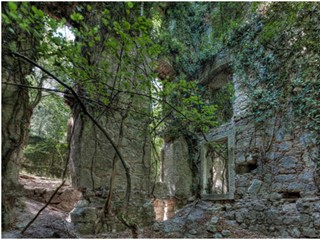Mill in Žakalj
address: Žakalj on RječinaPeriod: Historicism
Kind: Immovable material heritage
Century: 19
Year:
Purpose: industrial
Centuries ago, the karst area alongside the Rječina river with its length of 17.3 km was settled and divided into properties of the religious brotherhoods, the city treasury and private estates. The Rječina was a very suitable area for the development of commerce and crafts related to hydropower. With the beginnings of the industrial, or rather the more active manufacturing production, mills started being built on the Rječina river as well as sawmills for wood processing, fulling mills for processing wool cloth and grinding mills for wheat and barley. Very often a pasta factory was located right by the mill. The first significant rise of such symbiotic production took place during the 19th century. But soon the change in political relations within the Monarchy gave rise to the first issues in this area. Hungary became more protective of its own Budapest milling industry by raising traffic levies on the transportation of products. Concurrently, the import of Russian and Italian grain strongly increased. Nevertheless, Rijeka’s mills ground large amounts of wheat per year and the products were supplied to Istria, Dalmatia and the Levant, Brazil and India.
The most well-known mill was the one in Žakalj, underneath Orehovica. The mill was originally owned by Luka Matković (1839 to 1841), but, after it was sold by Matković’s son Gašpar, the mill became property of Carlo d’Ottavio Fontana and Marco Pigazzi from Trieste. The entrepreneurs from Trieste invested significant means into the small mill: they built a dam and a canal and set up a connection to the complex by constructing a bridge over the Rječina canyon and an ancillary road towards the Louisiana Road. The mechanism of the new mill was built according to the US, and later Belgian, technology and had eighteen millstones. Over a hundred workers were employed for operating the machines. The grain was imported from Russia, Romania and Banat, and the flour was exported to England, France, Brazil, Germany and the Balkans. After the mill burned down in 1862, it was purchased by the company Stabilimento commerciale di farine di Fiume, headed by Ignacije Scarpa. In 1865, an impressive six-storey facility was built, measuring 90 m in length and 25 m in height, with an internal skeletal structure of cast iron and wood and a wooden roof structure with a combined double roof truss and a single hanging beam. In addition to this structure, there were also a five-storey business/residential administration building and a single-storey residential building including the porter’s lodge located along the upper entrance next to the bridge over the river bed. The operation of this mill can be traced back to 1918. After World War I, it was completely abandoned. It also suffered significant devastation in World War II, when the bridge was mined and the complex damaged.
Valorization:The mill in Žakalj has been preserved in a very bad condition until today. Although some cleaning works were done, the architecture has not been preserved and is subject to further ruin. Works on the construction of a promenade, leading from the Paper Mill along the Rječina to the mills on the Rječina, are underway. This route should facilitate the availability of these localities to public visits.
Bibliography:
DARI, PR-1, kutija 264., fascikl VIII, 1824.
Bičanić, Rudolf, Doba manufakture u Hrvatskoj i Slavoniji 1750.-1860., Jugoslavenska akademija znanosti i umjetnosti, Zagreb, 1951.
Klen, Danilo, Povijest Rijeke, Tipograf, Rijeka, 1988.
Magaš, Olga, Ekološki park Orehovica, II. međunarodna konferencija o industrijskoj baštini, Pro Torpedo, Rijeka, 2005.
Palinić, Nana, Vodotok Rječine tijekom povijesti, II. međunarodna konferencija o industrijskoj baštini, Pro Torpedo, Rijeka, 2005.
Palinić, Nana, Rječina kroz povijest, u: Rječina i Zvir-regulacija i revitalizacija, Državni arhiv u Rijeci, Hrvatske vode, Grad Rijeka, Rijeka, 1999.
Rački, Andrija, Zabilježbe iz gospoštije Grobnik, 1948.
Rački, Andrija, Povijest grada Sušaka, Tisak Primorskog štamparskog zavoda d.d., Sušak, 1929.
Strohal, Rudolf, Uz Lujzinsku cestu, Tiskara Rijeka, Rijeka, 1993.
Sabljić-Butorac, Nada; Trkulja, Milica, Rječina i njezini mostovi, Muzej grada Rijeke, Rijeka, 1994.

